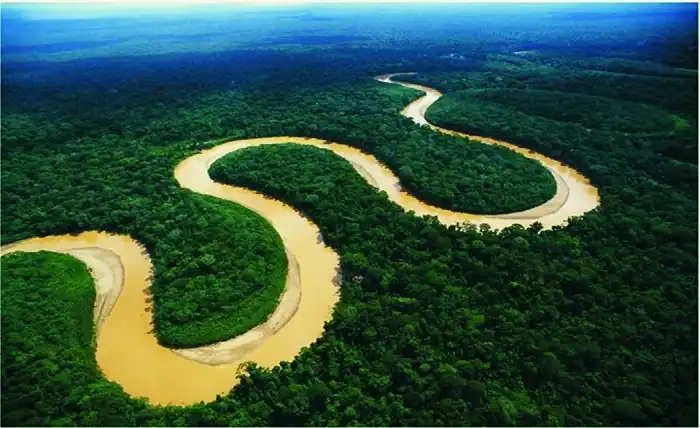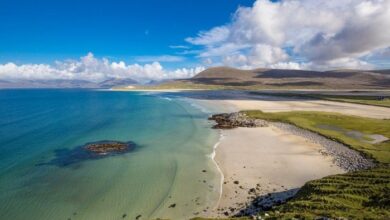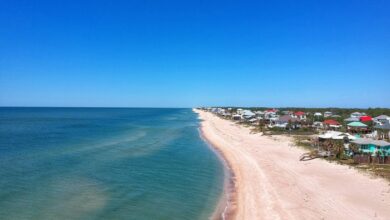How to Explore the Peru Jungle: A Guide for Adventurous Travelers

The Peru jungle, also known as the Peruvian Amazon, is one of the most biodiverse and fascinating regions in the world. It covers 60% of the country’s territory and is home to thousands of species of plants, animals, and indigenous people. If you are looking for an adventure in nature, the Peru jungle is a perfect destination for you.
What is the Peru jungle?
The Peru jungle is the area of the Amazon rainforest that lies within the borders of Peru. It extends from the east of the Andes mountains to the borders with Ecuador, Colombia, Brazil, and Bolivia. The Peru jungle is divided into two main ecoregions: the lowland jungle and the highland jungle.
- The lowland jungle, also known as the Omagua region, is the largest and most diverse ecoregion in Peru. It lies between 80 and 1,000 meters above sea level and has a tropical climate with high temperatures and rainfall. The lowland jungle contains many rivers, such as the Amazon, Ucayali, Marañón, Napo, Madre de Dios, and Purus.
- The highland jungle, also known as the Rupa-Rupa region or the Andean jungle, is the ecoregion that covers the eastern slopes of the Andes. It lies between 1,000 and 3,800 meters above sea level and has a subtropical climate with lower temperatures and rainfall. The highland jungle contains many valleys, waterfalls, and cloud forests.
How to get to the Peru jungle?
The Peru jungle is not easily accessible by road, so the best way to get there is by plane or boat. There are several airports in the Peru jungle that connect with Lima and other major cities in Peru. Some of the most popular airports are:
- Iquitos: The largest city in the Peruvian Amazon and a gateway to explore the northern part of the lowland jungle.
- Puerto Maldonado: A small city near the border with Bolivia and a gateway to explore the southern part of the lowland jungle.
- Tarapoto: A city in the highland jungle that offers access to various natural attractions and cultural sites.
Alternatively, you can take a boat from Lima or other coastal cities to reach some of the river ports in the Peru jungle, such as Pucallpa, Yurimaguas, or Iquitos. However, this option may take longer and be more expensive than flying.
How to explore the Peru jungle?
There are many ways to explore the Peru jungle, depending on your preferences, budget, and time. Some of the most common ways are:
- Jungle lodges: You can stay at a jungle lodge that offers comfortable accommodation, meals, and guided tours in the surrounding area. There are many jungle lodges in different parts of the Peru jungle that cater to different tastes and needs.
- River cruises: You can take a river cruise that allows you to travel along some of the main rivers in the Peru jungle and visit various attractions along the way. There are different types of river cruises available, from luxury to budget-friendly.
- Adventure tours: You can join an adventure tour that involves activities such as hiking, biking, rafting, zip-lining, or kayaking in different locations in the Peru jungle. These tours are suitable for travelers who seek adrenaline and challenge.
What to see and do in the Peru jungle?
The Peru jungle offers a wealth of attractions and activities for travelers who love nature and culture. Some of the highlights are:
- Wildlife watching: The Peru jungle is home to a remarkable diversity of wildlife, including monkeys, sloths, macaws, toucans, caimans, dolphins, jaguars, tapirs, and more. You can see them in their natural habitats or at wildlife rescue centers.
- Cultural encounters: The Peru jungle is also home to many indigenous communities that have preserved their traditions and lifestyles for centuries. You can visit them and learn about their culture, history, crafts, music, and cuisine.
- Natural wonders: The Peru jungle boasts some stunning natural wonders that will take your breath away. You can visit places such as Manu National Park , a UNESCO World Heritage Site that contains one of the highest levels of biodiversity in the world; Pacaya-Samiria National Reserve , a protected area that features flooded forests and abundant wildlife; Sandoval Lake , a beautiful oxbow lake that hosts a variety of flora and fauna; and Gocta Waterfall , one of the tallest waterfalls in the world that plunges from the highland jungle.
What to pack and prepare for the Peru jungle?
The Peru jungle is a challenging environment that requires some preparation and precautions. Here are some tips on what to pack and prepare for the Peru jungle:
- Pack light and comfortable clothing, preferably made of cotton or synthetic fabrics that dry quickly. Avoid jeans, wool, or leather. Bring long-sleeved shirts, pants, and socks to protect yourself from insects and sunburn. Bring a raincoat or poncho, as it rains frequently in the jungle. Bring a hat, sunglasses, and sunscreen to shield yourself from the sun. Bring a swimsuit, towel, and sandals if you plan to swim or bathe in the rivers or lakes.
- Pack sturdy and waterproof shoes, such as hiking boots or sneakers, that provide good traction and support. Avoid sandals or flip-flops, as they can be dangerous on slippery or uneven terrain. Bring an extra pair of shoes in case one gets wet or damaged.
- Pack insect repellent, preferably with DEET or picaridin, to ward off mosquitoes and other biting insects. Apply it generously and frequently, especially at dawn and dusk, when insects are most active. Bring antihistamines or corticosteroids in case you get an allergic reaction to insect bites.
- Pack a first aid kit with basic items such as bandages, gauze, antiseptic, painkillers, anti-inflammatory, anti-diarrheal, antacid, and rehydration salts. Bring any prescription medication that you need, as well as copies of your prescriptions. Bring a flashlight or headlamp with extra batteries in case of power outages.
- Pack a water bottle and a water purification device, such as tablets, drops, or filters, to ensure you have access to safe drinking water. Avoid drinking tap water or water from rivers or lakes, as they may contain harmful bacteria or parasites. Drink plenty of water to prevent dehydration.
- Pack some snacks and energy bars to keep you fueled during your activities. Avoid eating raw or undercooked food, especially meat, fish, eggs, and dairy products, as they may cause food poisoning. Eat only peeled or cooked fruits and vegetables. Wash your hands before eating and after using the toilet.
- Pack a camera and binoculars to capture the beauty and diversity of the Peru jungle. Bring extra memory cards and batteries for your devices. Bring a waterproof bag or case to protect your devices from moisture and dust.
- Prepare yourself physically and mentally for the Peru jungle. The jungle can be hot, humid, wet, muddy, noisy, and unpredictable. You may encounter insects, spiders, snakes, or other animals that may scare you or harm you. You may experience altitude sickness if you travel from the lowland jungle to the highland jungle or vice versa. You may face language barriers or cultural differences with the local people. Be flexible, patient, respectful, and adventurous.
Conclusion
The Peru jungle is a wonderful destination for travelers who want to explore one of the most biodiverse and fascinating regions in the world. It offers a variety of ways to experience its nature and culture, from staying at a jungle lodge to taking a river cruise to joining an adventure tour. It also offers a range of attractions and activities, from wildlife watching to cultural encounters to natural wonders. However, it also requires some preparation and precautions to ensure a safe and enjoyable trip. By following these tips on how to explore the Peru jungle, you will be ready to embark on an unforgettable adventure!





